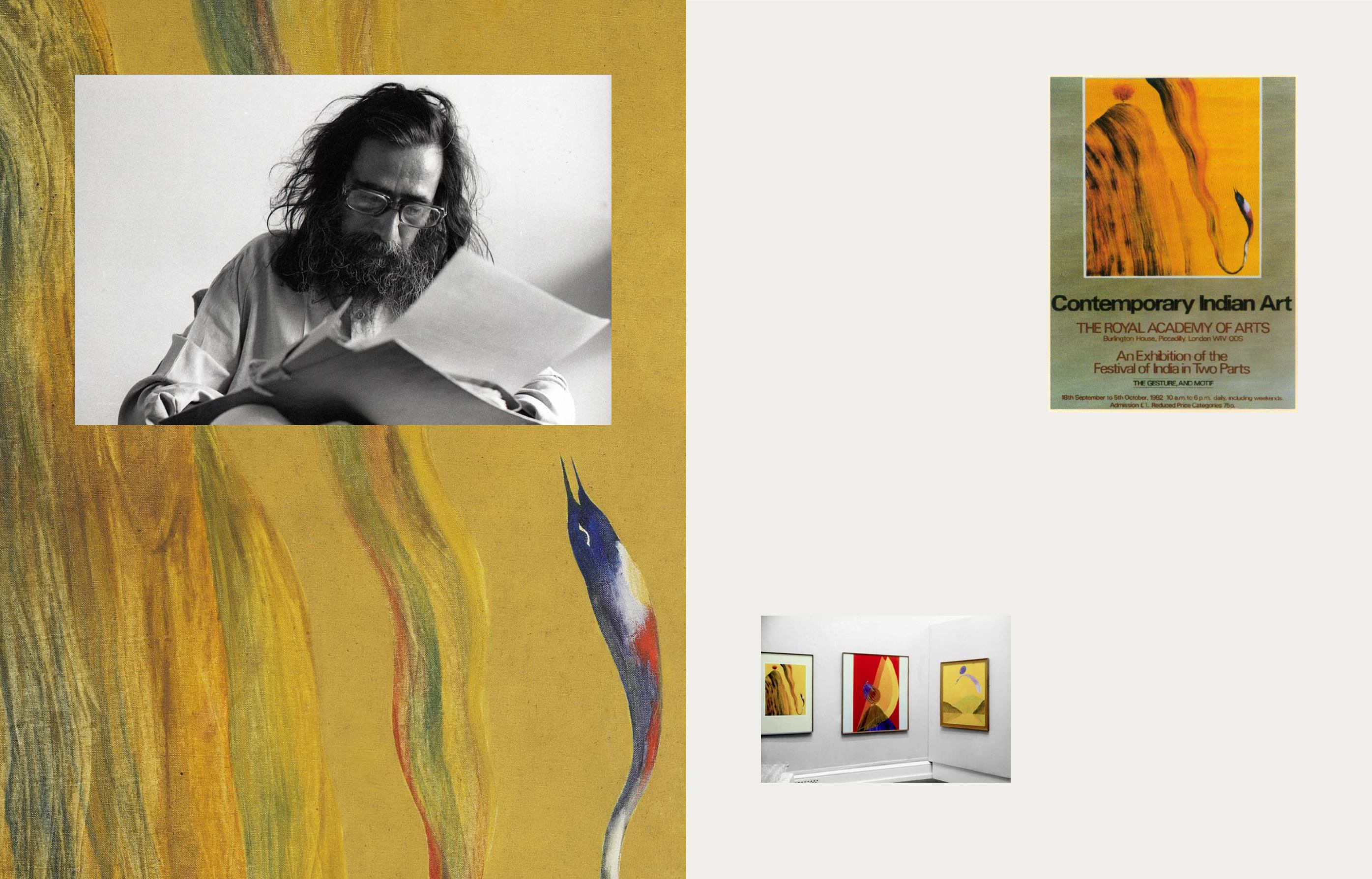

108
109
Jagdish Swaminathan’s “Bird, Mountain and Tree” series
exemplifies the beauty of basic symbols and geometric
shapes found in India’s indigenous art traditions.
Swaminathan had a profound interest in the folk and tribal
art of Central India. This stemmed from his rejection of the
idea that Indian modernism developed from encounters
with the West—which perhaps held true for some of his
contemporaries such as Akbar Padamsee and Jehangir
Sabavala. Swaminathan turned inwards instead, looking
to lay the foundations of Indian modernism through the
nation’s own folk and tribal art traditions.
Swaminathan actively sought to solidify his ideas, forming
a collective of artists called Group 1890 in 1962, and
founding the Roopanker Museum of Art at Bharat Bhavan,
Bhopal, in the 1980s. Both the artist collective and the
museum supplied him with a platform to refine his ideas.
Swaminathan experimented with totemic symbols from
early societies in a constant quest to simplify, to find the
origins, to return to purity. He also explored a ‘primitive’
system of communication, adopting ancient symbolism as
a tool to reconnect modern Indian art with its indigenous
precursors. It is from these ideas that the “Bird, Mountain
and Tree” series was born.
The series was self‒explanatory. The purity which
Swaminathan sought manifested effortlessly through
the specific objects, and formed a link with the ancient
symbols he strived to understand. In the present lot,
the bird, mountain and tree are separate objects which
complement each other. The mountain with the tree at its
peak provides perspective and a sense of monumentality,
which is balanced by what appears to be the path taken
by a bird rising upwards. Swaminathan achieves a sense of
The present lot on display at
Contemporary Indian Art
, at the Royal Academy of
Arts, London, 1982
harmony by juxtaposing the bird in motion with the static
mountain and tree. He also offers the possibility of a more
layered, deeper interpretation in which the objects signify
more than their presence on the canvas.
The painting was exhibited with a few select works by the
artist in the group show,
Contemporary Indian Art
as part
of The Festival of India in Britain, in 1982. Held at The Royal
Academy of Arts in London, the show was curated by
Richard Bartholomew, Geeta Kapur and Akbar Padamsee. It
featured 133 artworks by forty‒five artists, and was divided
into two parts. The present lot was displayed in the first part
of the exhibition, titled
The Gesture and Motif.
The Festival
of India was “designed to project the spirit of India and her
achievements,” (
Contemporary Indian Art: An Exhibition of
The Festival of India
brochure, Mumbai: Vakils, 1982) and in
this regard, Swaminathan’s painting encapsulates the goal
perfectly. The painting would have also presented a very
different concept of Indian modernism to the British public,
which was “relatively unacquainted with it,” (
Contemporary
Indian Art
brochure) thus taking Swaminathan’s ideology
beyond the borders of India to a wider audience.
Poster showing the present lot
Jagdish Swaminathan
© Jyoti Bhatt
“The mind moves through the object to the idea,
and through the idea to the object. Thus, the work
becomes concrete and abstract at the same time.”
J SWAMINATHAN


















